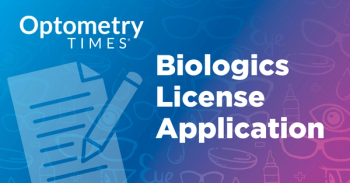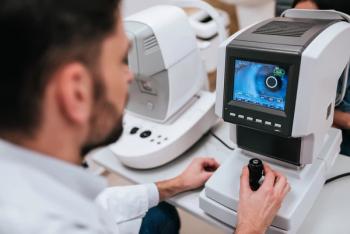
Digging into the 6-month first-in-human clinical trial data from SpyGlass Pharma
Patrick Mooney, CEO of SpyGlass Pharma, sits down to discuss the 6-month first-in-human clinical trial data of their drug delivery platform with bimatoprost, which is implanted during routine cataract surgery.
Video transcript
Emily Kaiser:
Hi, everyone, I'm Emily Kaiser with Optometry Times. SpyGlass recently released their 6-month data of their first-in human (FIH) clinical trial of a bimatoprost-eluting IOL. I'm here with Patrick Mooney, CEO of SpyGlass. Welcome. Thanks for taking the time to talk to me.
Patrick Mooney:
Hi, Emily. Thanks for the time. Happy to be here.
Kaiser:
All right. Well, what can you tell me about this new data from SpyGlass?
Mooney:
Sure. Just last Friday, as you kindly reported out, SpyGlass released an update to our first-in-human clinical trial at the 6-month time point; last year, we released the 3-month results. And as of last week, we released the updated 6-month results, which showed continued efficacy and safety of mean IOP reductions of 45% across all treatment groups. And these patients are still off of IOP-lowering therapy, and we're really happy to see it. So it was really encouraging and a strong signal that we're developing something really special here.
Kaiser:
Absolutely. And how will this implant affect the treatment paradigm for glaucoma?
Mooney:
Ah, great question. Well, as you know, many patients struggle with taking their chronic medications through all disease states. Eye diseases, and glaucoma certainly, is not immune to that. And so, for decades, we have long been wanting some type of sustained-release, long-term drug delivery option to really help improve the burden of care that's put upon patients, whether it be taking their medications daily, the cost that comes with all of that monthly—it's a lot to manage.
But most importantly, disease management requires patients to actively take their medications. And unfortunately, if they don't take their meds every day, then the disease is more difficult to control. And so we believe that, if approved someday, that SpyGlass will be a welcomed treatment option for many patients as they are entering the operating room for routine cataract surgery. We think this is a really synergistic time. Patients are already undergoing a procedure, and they can address two problems, if you will, at the same time. And this is a simple way that cataract surgeons already know how to do with our methodology and no new skills are required for them to learn this. And it's an easy time for patients to address both issues at the same time. So we think this is really a special treatment, paradigm shift that patients are going to welcome.
Kaiser:
What are the next steps in this research?
Mooney:
Yeah, so it's an exciting year for us: Finishing up our 6-month FIH trial leads us directly into finalizing our preparation for submitting our US IND (Investigational New Drug) to move forward with US clinical trials. So we've announced publicly that our team is busily preparing that IND submission to US FDA, and our expectation is that we are enrolling patients in our US phase 1/2 combined clinical trial here later this year.
Kaiser:
And are there plans to investigate the drug-eluting implant for other eye diseases such as AMD or diabetic macular edema?
Mooney:
In fact, yes, that's on our board. As of today, we are solely focused in on advancing our Generation 1 for delivery at the time of cataract surgery. But we've already proven that our platform is capable of eluting additional drugs like dexamethasone and nonsteroidals, but we also have targets in mind for treating chronic diseases, such as chronic uveitis as well as AMD. And so we think this is an exciting platform, first starting with glaucoma, but can also potentially treat other chronic diseases like AMD.
Kaiser:
All right, well, thank you for walking me through that and for sharing the 6-month data, and I can't wait to see what's next for the implant.
Newsletter
Want more insights like this? Subscribe to Optometry Times and get clinical pearls and practice tips delivered straight to your inbox.








































